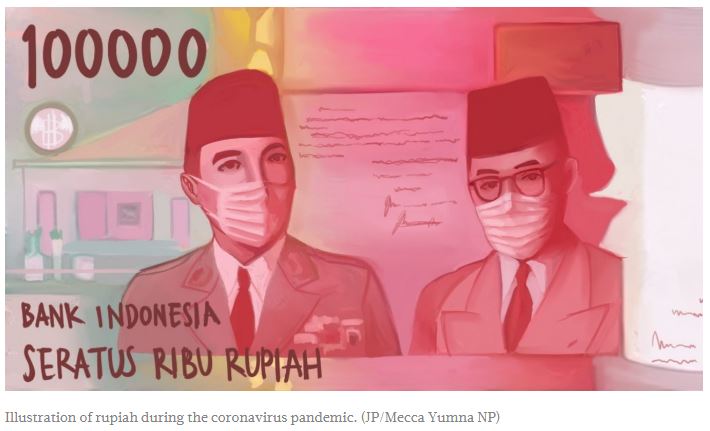Indonesia: Govt spends 44% of recovery budget up to September, health spending lags
The Indonesian government has disbursed Rp 304.6 trillion (US$20.5 billion), or 43.8 percent of the Rp 695 trillion national economic recovery (PEN) budget, as of Sept. 28, with social safety net spending accelerating but healthcare spending still lagging.
The government had spent Rp 150.8 trillion, or 74 percent of the social safety net budget, in the hope of softening the demand shocks caused by the COVID-19 pandemic and helping people stay afloat amid the economic downturn, said PEN committee head Budi Gunadi Sadikin.
“We believe that, God willing, we can spend the entire budget by the end of the year so we can give leverage to Indonesia’s economic growth in the third and fourth quarters,” Budi told the press on Wednesday.
After failing to grow its spending in the April–June period, the government is trying to boost its spending on the COVID-19 relief package to prevent further economic losses. The country’s economy contracted 5.32 percent year-on-year (yoy) in the second quarter.
For health care, the government has spent Rp 21.79 trillion, or around 25 percent of the allocation in the COVID-19 relief package. The money was channeled into spending on incentives for medical workers, death compensation, COVID-19 handling in hospitals and healthcare facilities, as well as the National Health Insurance (JKN) and tax incentives in the healthcare sector.
“We are making sure that we are spending the budget and it remains available even for vaccine procurement,” said Suahasil Nazara, the deputy finance minister. “If a vaccine is ready this year and we can [give it] this year, we will make an allocation for that and we will do it.”
With this spending on the COVID-19 relief package, Suahasil estimated the government’s spending in the July–September period “will be quite high.”
“However, it may not be able to compensate for the decline in consumption and investment yet,” added the deputy minister.
Statistics Indonesia (BPS) recorded a contraction of 5.51 percent yoy in consumption and 8.61 percent yoy in investment in the April–June period.
Aviliani, an economist at the Institute for Development of Economics and Finance (Indef), said Thursday that the coronavirus relief package disbursement was relatively low despite its big impact. She said it should have reached around 70 percent by September, around six months after the pandemic started battering the country.
A lack of updated poverty data, which might have been less of an issue if the country had an integrated data system, and the business-as-usual approach in bureaucracy led to the slow disbursement of the pandemic relief package, said Aviliani.
“It is still relatively low,” Aviliani told The Jakarta Post in a phone interview. “The government’s spending was late but people’s income had been falling since April.”
Piter Abdullah, an economist at the Center of Reform on Economics (CORE) Indonesia, said the government’s fear of mistargeting the relief package and thus getting criminalized or politicized was the bigger obstacle in getting the assistance to the people.
The government needs to prioritize the speed of the disbursement over the accuracy because it is not possible to solve the data issue in a short time and people cannot afford more time to wait for the assistance, according to Piter.
“It is better to be not so accurate but quick. Do not be both inaccurate and slow. Not being accurate is inevitable given the limitation in the data,” Piter told the Post in a phone interview on Thursday.
For the social safety net programs, the government spent the most money on the Family Hope Program (PKH), disbursing Rp 36.3 trillion for 10 million eligible recipients, which covered the poorest 40 percent of the population.
The government has also spent Rp 31.9 trillion on the Staple Food Card program to provide food aid for 19.4 million eligible recipients, some of which are also the recipients of the Family Hope Program.
To help ease companies’ costs, the government is subsidizing the wage payment for workers who earn less than Rp 5 million a month and are active customers of the Workers Social Security Agency (BPJS Ketenagakerjaan).
Since its launch in August, the government has disbursed Rp 14 trillion in wage subsidies to 11.6 million eligible workers.
In August, the government also launched a grant to help micro, small and medium enterprises (MSME), called social productive assistance. A total of Rp 16 trillion in grants was paid out to 6.6 million small businesses.
Source: https://www.thejakartapost.com/news/2020/10/01/govt-spends-44-of-recovery-budget-up-to-september-health-spending-lags.html


 Thailand
Thailand




